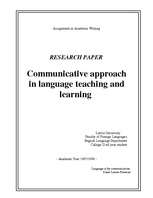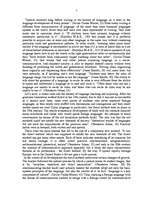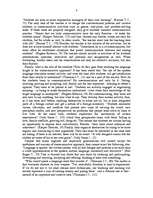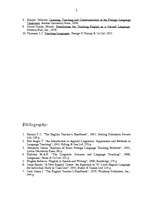-
Communicative Approach in Language Teaching and Learning
Evaluated!
“Speech occurred long before writing in the history of language, as it does in the language development of every person”. (Savile-Troike Muriel, 25) Even today writing is different from characteristics of language: of the more than three thousand languages spoken in the world, fewer than half have ever been represented in writing. That does make one to speculate about it. “If children learn their primary language without systematic instruction in it”, (Halliday M.A.K., 180) that means that it is perfectly possible to acquire one or more any other language in the same way without cramming particular rules and grammatical patterns. In other words, “learning takes place more readily if the language is encountered in active use than if it is seen or heard only as a set of disembodied utterances or exercises”. (Halliday M.A.K., 181) If native speakers of any language know how to put the words in the right grammatical order so automatically that they “have seldom been consciously taught anything about this order”, (Savile-Troike Muriel, 33) that means that any other person acquiring language in a social, communicative, well-disposed society, is able to express oneself clearly without even thinking of producing the words and grammatical structures. “Having ideas, organizing them logically and expressing them effectively” (Jones Rhodri, 16) will come later, but very naturally, as if speaking one‘s own language. “Students may know the rules of language usage, but will be unable to use the language”. (Jones Rhodri, 80) The ability to talk about the grammar of a language, to recite its rules is very different from the ability to speak and understand a language or to read and write it. “Often those who can use a language are unable to recite its rules, and those who can recite its rules may be not unable to use it”. (Gorohova Jelena, 23)
Let‘s have a closer look into the history of language teaching and acquiring. After the grammar-translation method failed in the 18th century due to that it was not so successful as it should have been: there were plenty of students who never mastered foreign languages, as their heads were stuffrd with declensions and conjugations and they could neither speak nor read (Latin language in particular); the direct method took its place in the 19th century. The steady economical development of trade with the colonies required many merchants and clerks who would speak foreign languages. All attempts to teach conversation by means of the old translation methods failed. The idea was that the old methods could not satisfy the new demands of society; “theoretical studies of languages did not meet the requirements of the practical ones”. (Gorohova Jelena, 24) Practical habits were in demand, both written and oral speech.
There were the main reasons that led to the rise of a completely new method: “It was the direct method which was supposed to satisfy the new demands of life. The direct method has got many other names. Each of them indicates something of its character but not nearly enough; it is often called practical conversational, antigrammatical, antitranslational, phonetical, natural”(Gorohova Jelena, 25) and only in the 20th century the concept of communicative approach appeared, but it bears the same characteristic features as its predecessor - the direct method. By the way, It spread rapidly through Europe, but in the United States it did not gain a wide success.
In the course of its development the direct method underwent certain changes of growth.
The teacher followed the natural process by which a person learns its mother tongue, that is by “imitation, repetition and direct association”. (Gorohova Jelena, 26) By communicating teacher made (and actually makes) the students adopt not only the basic spoken principles of the language, but also the culture of it. In fact, “language is a key component of culture”. (Savile-Troike Muriel, 45) Thus, learning a foreign language with the means of communication enables to merge with a foreign cuture by communicative psychological abilities, adopting which makes an impact onto one‘s mind listening to someone‘s speech. “Language is the expressive dimension of culture”. (Savile-Troike Muriel, 140) The corollary follows that the teacher of the language is a teacher of culture. Haven‘t you thought that it is “celebrating holidays, singing folksongs and eating particular foods” (Savile-Troike Muriel, 74) that make the classes so charming and very useful as well?! Thus, the double function is being carried out: learning language and acquiring culture. Both are being done voluntarily and without any interference and impact on the part of the teacher.
…
Šis darbs ir piemērots visiem topošiem pasniedzējiem, jo īpaši angļu valodas :-)







